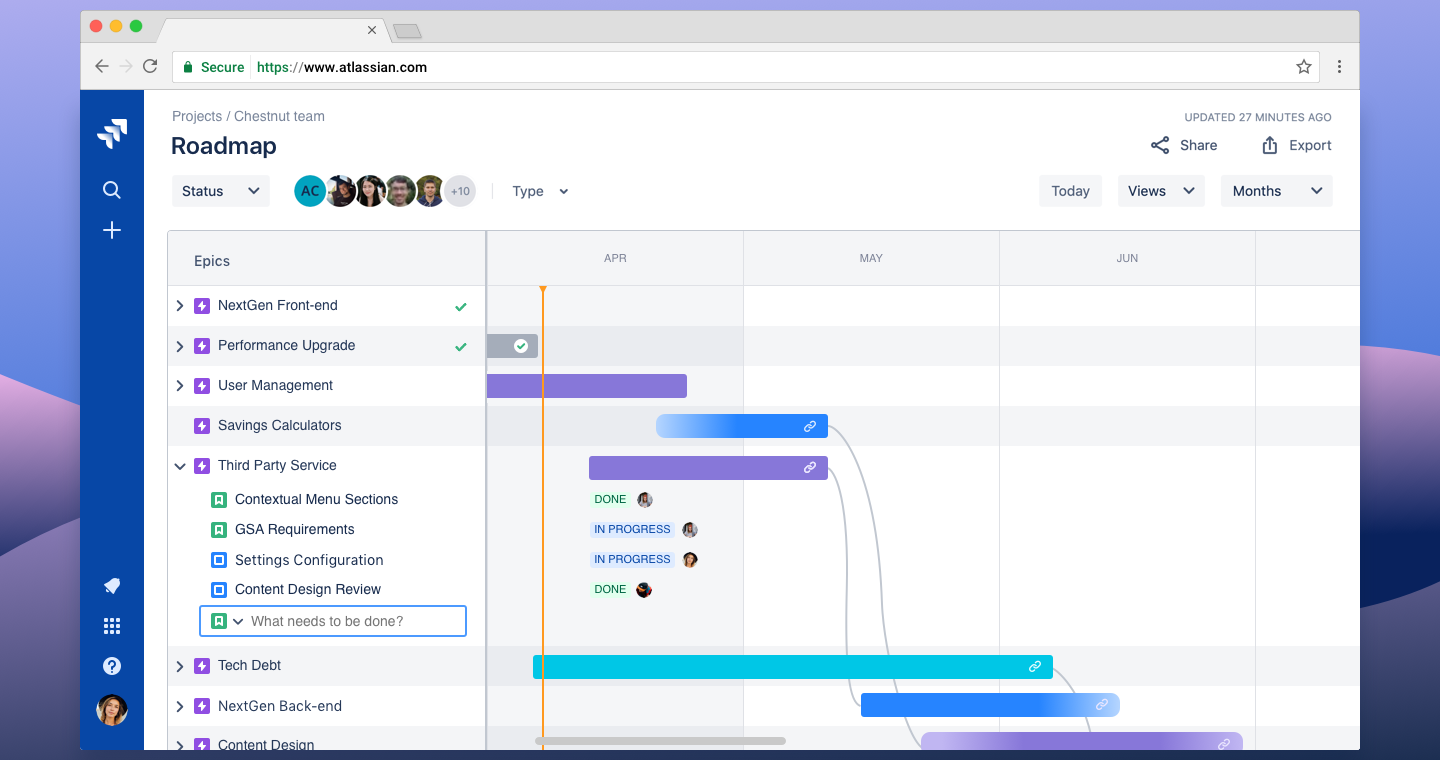As of May 30, 2023, the Roadmap view in Software projects is now called Timeline. While this feature has a shiny new name, it still offers all the same powerful capabilities, such as visualizing issues on a timeline, tracking sprints and releases, and mapping dependencies!
Just over a year ago we released the next-gen experience in Jira Software – the biggest update to Jira Software in more than a decade. We combined years of customer feedback with emerging software development trends to completely reimagine fundamental aspects of our flagship product. The release of next-gen also came a year after the acquisition of Trello and incorporated many of Trello’s design influences, including its simplicity and easy setup, into Jira Software.
We reimagined Jira Software across the board, adding native roadmapping; making it easier to mix and match different flavors of agile frameworks; simplifying the user interface and administration; making it so anyone can set up and manage a Jira Software project; making the boards more visual and flexible; and completely overhauling the design of the Jira issue.
In the intervening year, a fan favorite of the next-gen Jira Software experience has been its native roadmapping feature – in fact, within one month of launching the next generation experience, 45 percent of customers were using this functionality, making it the most rapidly adopted feature in Jira’s 18-year history. Additionally, since the launch of native roadmaps in next-gen, customers have created over two million roadmap items.
So why have roadmaps been such a success with Jira customers? While Jira Software has been enabling teams to collaborate better together since its inception, users have increasingly been looking for more ways to roll up all the work their teams are doing into a bigger-picture view. And the roadmap allows for exactly that: every team member has access to a high-level snapshot of what they’re working on. Roadmaps also allow teams to share their plans and progress with other stakeholders, including executives, cross-functional partners, and anyone else who might not be in the weeds of a particular project day in and day out.
According to Chester Dean, Director of Business Technology Operations at Looker, a business intelligence software and big data analytics platform: “We leverage tools to empower Lookers’ productivity. The new Jira enables Looker teams to communicate effectively with management via roadmaps without the friction of centralized administration. Next-gen frees teams to produce.”
Building on the incredible customer enthusiasm we’ve seen for roadmaps over the past year, today we’re excited to announce a slew of new roadmap capabilities:

Progress bar Get a quick snapshot of how you’re making progress against your roadmap plan with a progress bar that shows the macro-level progress of each roadmap item.
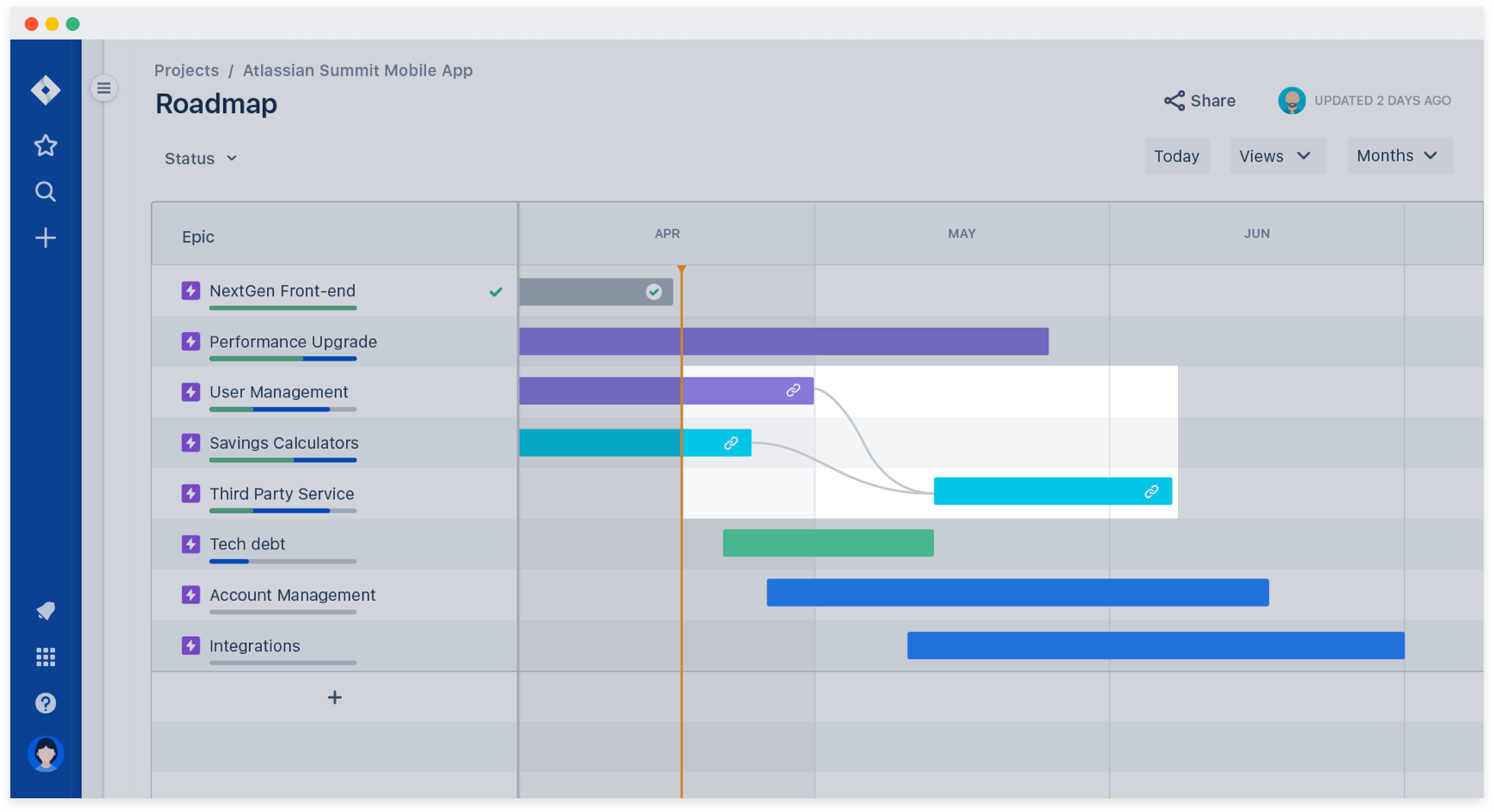
Dependency mapping Get ahead of dependencies and blockers when you make plans by visualizing relationships between roadmap items with the drag-and-drop dependency mapping feature.
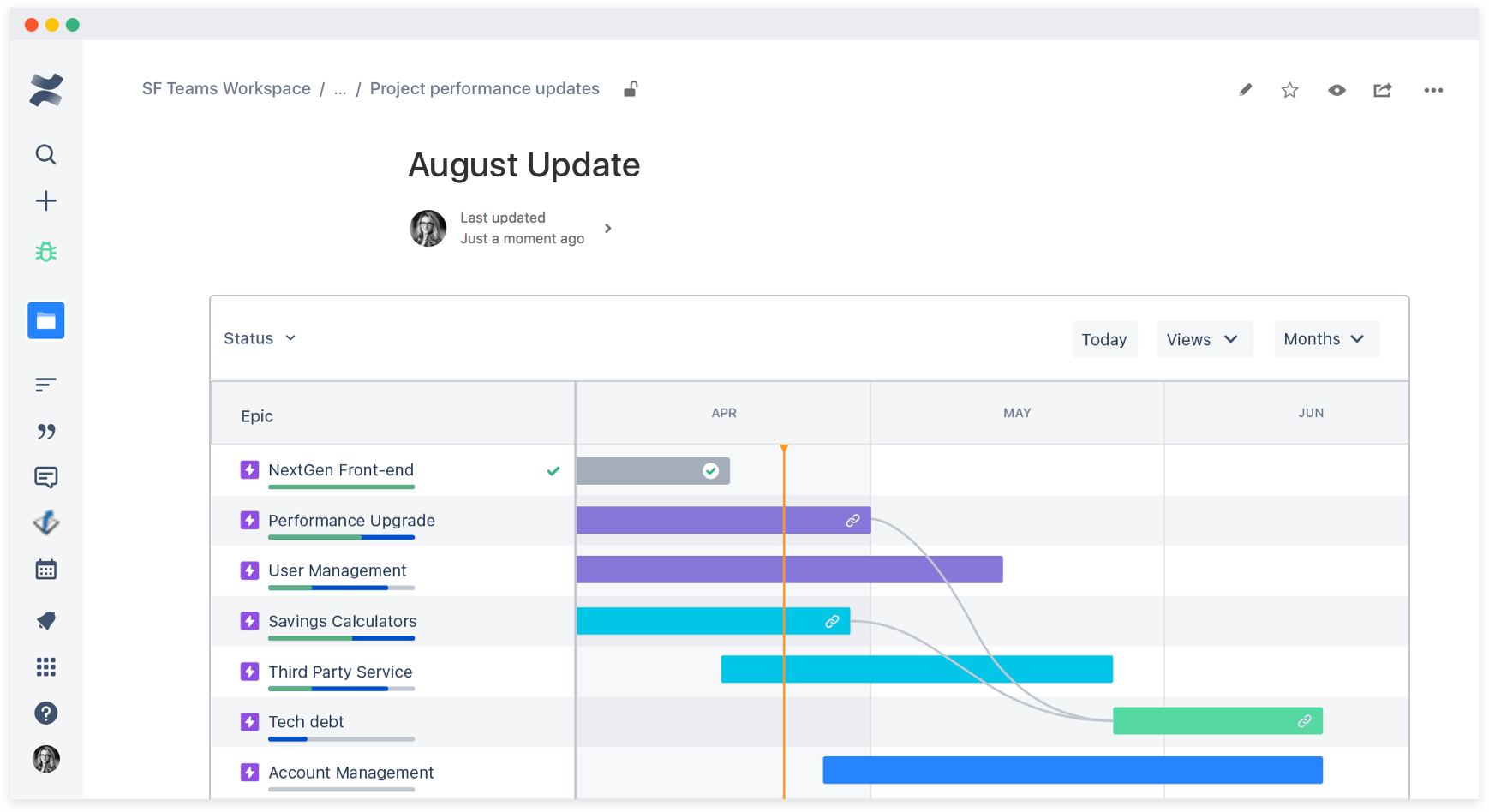
Confluence macro Share a live Jira roadmap across your organization with the Confluence integration, which enables you to showcase an organization-level view of what multiple teams are working on by aggregating the roadmaps of multiple teams on a single Confluence page.
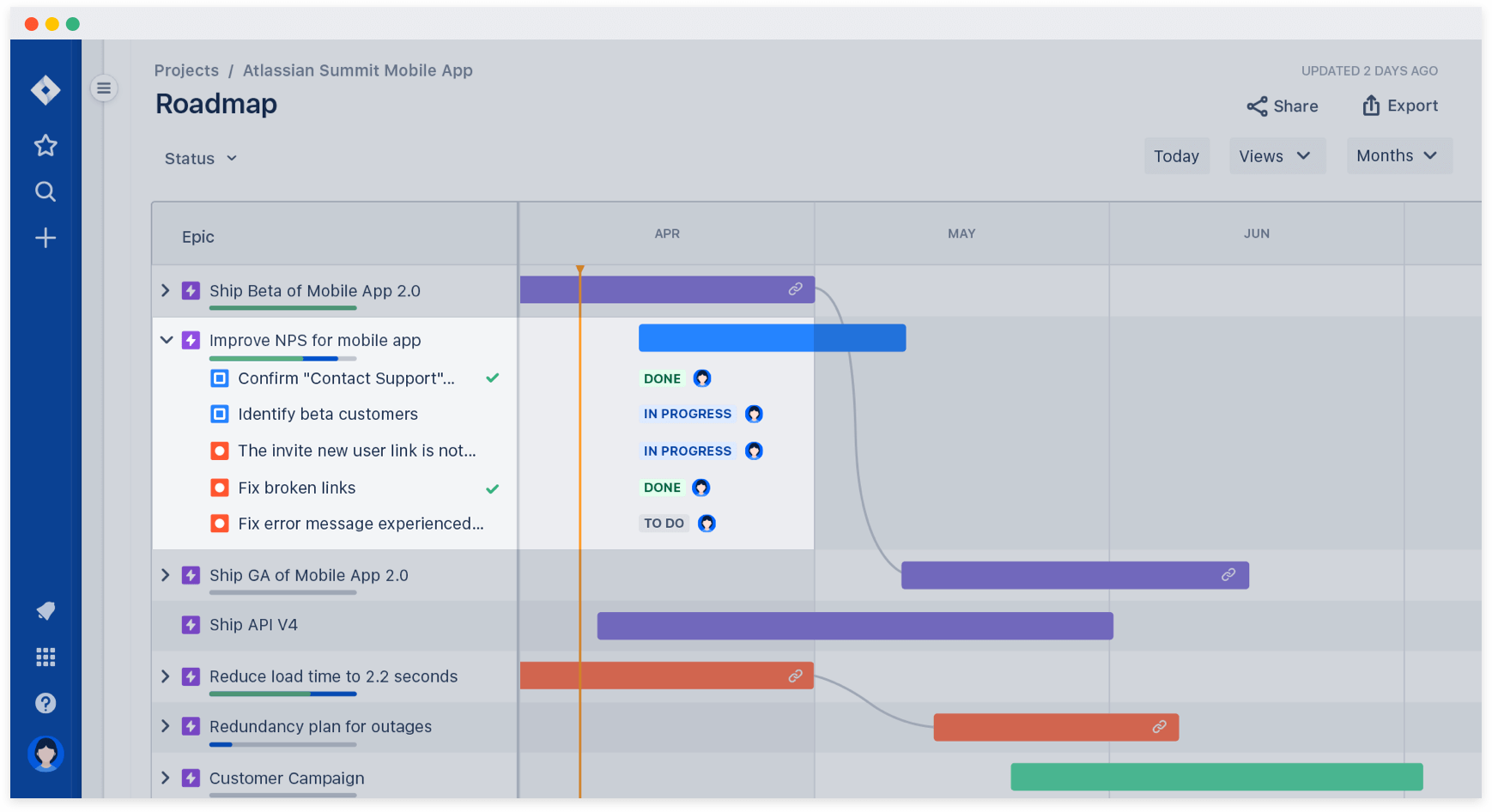
Hierarchy Drill down from the macro-level roadmap items right into the details of a specific project with hierarchy levels on the roadmap, which allow you to unfold roadmap items to show all the respective stories and tasks that comprise the bigger pieces of work.
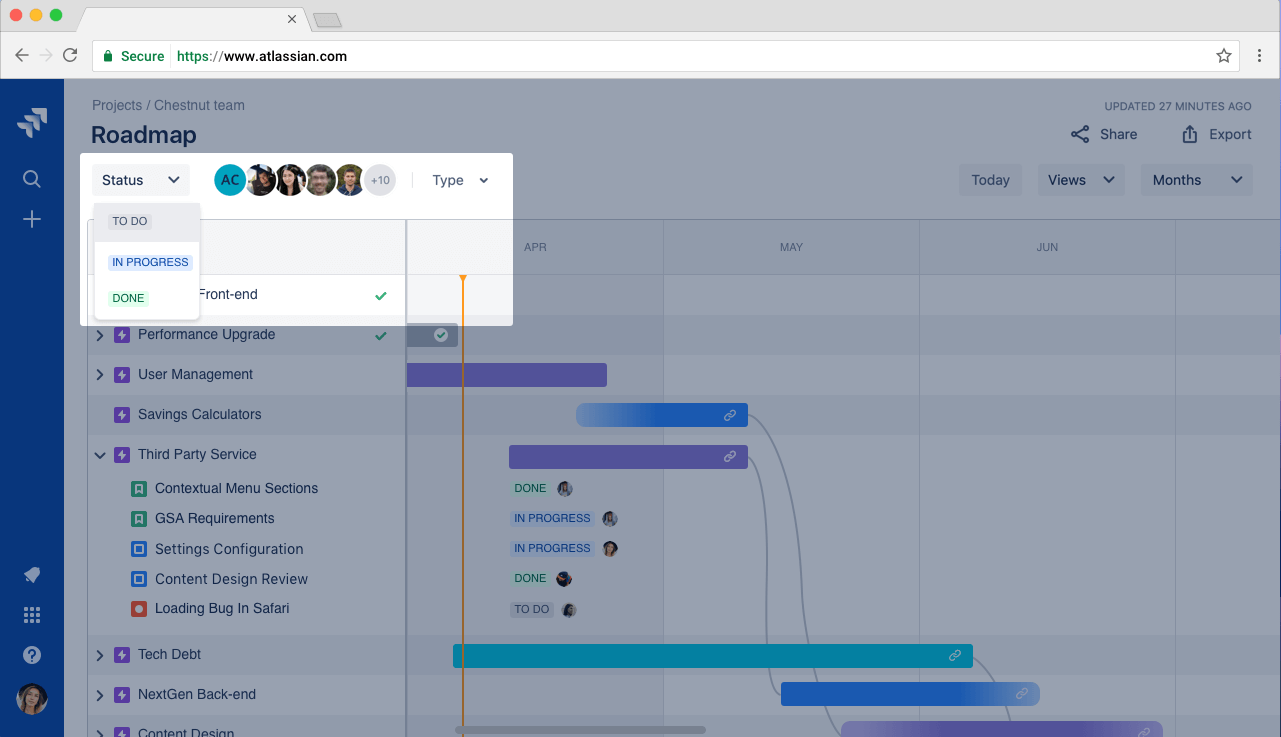
New filters Get a precise view of the roadmap that you need with new filters. This feature makes it easy to single out work in progress or create a roadmap that highlights only work you’ve completed.
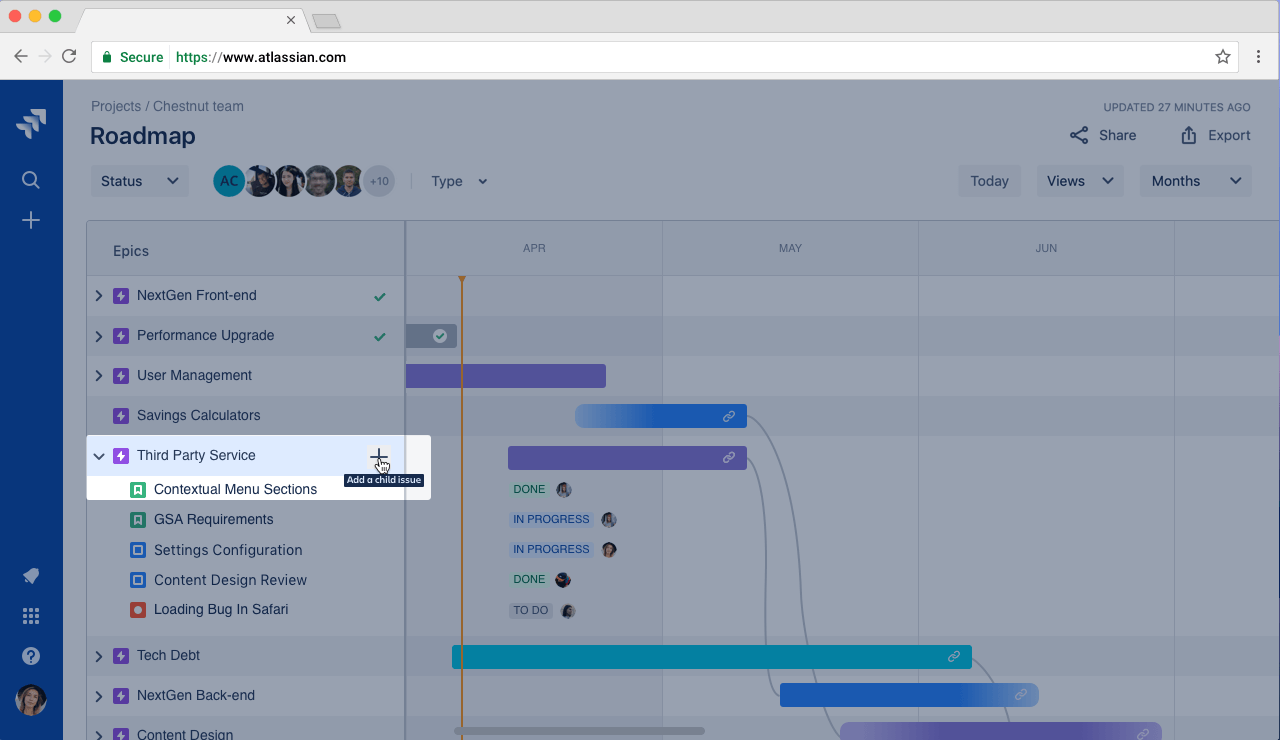
Break down work inline Users told us they love the ability to create new roadmap items inline with a click. We’ve now made it so you can create “smaller” pieces of work, with a single click, right from the roadmap.
Looking ahead into 2020, roadmaps will increasingly become part of Jira Software’s core promise to help teams plan, track, release, and report on their work. We’ll be focusing on further helping organizations aggregate multiple roadmaps into a single consumable artifact, providing better visibility into all the work happening in a business. We’ll also be exploring more ways to bring the roadmapping functionality to customers who haven’t yet started using our next-generation experience in Jira Software.
Today, Atlassian offers several roadmapping solutions, including a team-level option (the next-gen native feature described in this blog post), a program-level roadmap (Portfolio for Jira), and an enterprise organization-level roadmap (Jira Align). In 2020, users can look forward to seeing these three solutions increasingly work better together.
As for the next-generation experience, users will enjoy more and more of the powerful functionality they’re accustomed to seeing in Jira Software, to help teams scale workflows and collaboration across an entire organization. And as with everything in next-gen, the look and feel of these features will be fresh, with an emphasis on simplicity and ease of use.
